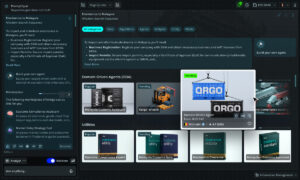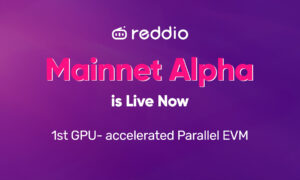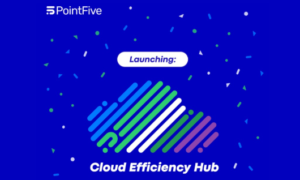If your company already relies on Microsoft tools, you can add AI features without bringing in an entirely new Python setup. The real job isn’t learning new technology – it’s helping your developers: learn how to write effective prompts for large language models, keep track of model versions and training data, and design and maintain the vector databases that store your documents for search. Do that, and your teams can keep writing the same C#/.NET code they use today – just with smarter capabilities plugged in.
The article is based on the .NET development portfolio of Belitsoft. This custom software development company dedicates API integration developers to your projects, provides .NET Core web development services, .NET mobile development, and modernization of the .NET-based software and related infrastructure to improve performance.
.NET AI Options
The first option is custom model development with ML.NET. ML.NET is an open-source framework that lets C# or F# developers train, evaluate, and run machine learning models inside any .NET application. No additional runtime is required, and no Python bridge is needed.
The second option is consumption of prebuilt Azure AI Services. These cloud APIs deliver ready-made capabilities such as image analysis, speech recognition, and text analytics. A developer calls an endpoint, passes data, and receives a structured result in JSON.
Both options are designed to be used together. A web service could call Azure AI Speech to convert alerts to audio while also invoking an ML.NET model that predicts part failure dates. A single identity system, a single logging pipeline, and a single deployment process cover both calls. The mix-and-match approach is intended to reduce skills risk for teams that already build in .NET and want to add intelligence without changing language or toolchain.
Recent changes expand platform capabilities:
- Semantic Kernel provides orchestration for large language model prompts and for deterministic C# code.
- Microsoft.Extensions.AI supplies dependency injection helpers and configuration patterns.
- .NET Aspire defines infrastructure components such as vector databases, caches, and OpenAI endpoints in a single C# project so developers can run the full solution locally with one command.
- Low-level bindings to TensorFlow (TensorFlow.NET) and PyTorch (TorchSharp) keep the stack open to research-grade experiments.
Custom intelligence with ML.NET
ML.NET is written in C#, released under the MIT license, and distributed as NuGet packages.
The framework streams data through the IDataView abstraction, which avoids loading entire data sets into memory and allows processing of terabyte-scale files.
Built-in trainers cover classification, regression, clustering, anomaly detection, recommendation, ranking, and time series forecasting.
Extension packages load TensorFlow or ONNX graphs so convolutional and transformer networks are available without leaving the .NET runtime.
Tooling is aimed at general-purpose development teams.
Model Builder in Visual Studio walks through data import, automated algorithm selection, and evaluation charts. At the end of a run, it produces a model.zip file, a prediction API class, and an example console application.
The CLI version, mlnet, offers the same workflow for scripting and continuous integration jobs. All generated code targets .NET Standard, so it compiles in older and newer projects alike.
Enterprises use ML.NET when data cannot leave a secure boundary, when predictions must run offline or on edge hardware, or when a domain-specific problem is not covered by the Azure AI catalog. Common scenarios include demand forecasting, equipment health monitoring, customer churn scoring, and recommendation lists built from private clickstream data.
Performance advances arrive through general .NET runtime work. .NET 8 extended vectorization and improved just-in-time compilation so ML.NET pipelines can perform up to forty percent faster than on .NET 6 in like-for-like tests. Future versions will inherit further gains from .NET 9 and .NET 10 as the runtime expands support for new CPU instructions.
Pretrained intelligence with Azure AI Services
Azure AI Services expose ready-made models over HTTPS. Authentication uses either an API key or a managed identity obtained from Microsoft Entra ID. The preferred access path is the Azure SDK for .NET. Direct REST calls remain available for platforms that cannot load the SDK.
Azure AI Vision returns image captions, tags, objects, and structured text recognized by optical character recognition. A single endpoint now covers what used to be multiple separate services. Custom Vision remains available when organizations need to train a private image model.
Azure AI Speech supports four functions.
- Speech-to-text converts real-time or batch audio into text, optionally with speaker diarization.
- Text-to-speech produces audio in dozens of neural voices and supports SSML for prosody control.
- Speech translation provides live multilingual speech
- Speaker recognition verifies or identifies a person by voice.
All functions reside in the Microsoft.CognitiveServices.Speech package.
Azure AI Language bundles sentiment analysis, named entity extraction, personally identifiable information detection, key phrase extraction, summarization, and conversational language understanding. A separate Question Answering endpoint builds knowledge bases from unstructured documents. The Azure.AI.TextAnalytics and Azure.AI.Language.QuestionAnswering packages handle both synchronous and batch requests.
Azure AI Content Safety replaces the older Content Moderator. It scores text and images for hate, violence, sexual content, and self-harm and adds prompt blocking for large language model inputs.
Decision Services such as Anomaly Detector and Personalizer are scheduled to retire in October 2026. Organizations relying on those services need to plan a migration to ML.NET models, Azure Data Explorer functions, or new LLM-based personalization components.
A typical selection rule is simple: choose an Azure AI Service when the task is standardized and the goal is fast deployment with minimal model management. Choose ML.NET when regulation, cost at scale, or a niche domain demands local control.
Large language model orchestration
Azure OpenAI Service makes GPT and DALL-E models available under the same compliance and data handling framework as other Azure resources.
Enterprise customers authenticate with Entra ID and gain keyless access so secrets do not appear in configuration files. The Azure.AI.OpenAI client library supports chat completions, token streaming, and image generation.
Semantic Kernel is a .NET library for structuring LLM interactions. Developers register prompt templates as semantic functions and ordinary C# methods as native functions. Both types become callable through a uniform interface. A planner component can inspect a user goal and build a chain of calls that combine language model reasoning with deterministic operations such as database queries or API posts. A memory component stores embeddings in any vector store that implements a simple interface.
Retrieval-augmented generation is the dominant pattern for enterprise chatbots. The process ingests unstructured documents, slices them into chunks, stores vector embeddings, and retrieves the top-K matches at query time. Retrieved passages are added to the system prompt so the LLM answers from customer-specific data.
Azure AI Search is a common store. Alternatives include Qdrant, Milvus, and Redis with vector extensions. Microsoft ships a .NET AI Chat Web App template and an Aspire preset that wires the required resources.
Low-level bindings for TensorFlow and PyTorch
TensorFlow.NET binds the full TensorFlow and Keras application programming interface. TorchSharp binds to the C++ libtorch engine that powers PyTorch. Both libraries expose tensors, gradients, optimizers, and data loaders in C#.
They are used when a team needs to implement a novel architecture that is not covered by ML.NET or when an existing Python model must remain byte-for-byte identical in a .NET production stack.
Developing with these bindings requires manual control over memory, batching, and device placement. The learning curve is higher than with ML.NET pipelines or Azure AI calls. The trade-off is flexibility: every operation that exists in TensorFlow or PyTorch is available, and custom CUDA kernels can be loaded if required.
Lifecycle and tooling
Visual Studio remains the primary integrated development environment for production code. It offers ML.NET Model Builder, IntelliSense for Azure AI client libraries, debugger support for multiprocess Aspire solutions, and a combined log-trace-metric dashboard.
Visual Studio Code, augmented by the AI Toolkit, targets early-stage experimentation. The extension provides a model catalog, a prompt playground, and local model hosting through runtimes such as Ollama.
.NET Aspire addresses deployment consistency. An AppHost project lists every component of a distributed application: web APIs, background workers, databases, caches, message queues, vector stores, and external services. Aspire injects connection strings and secrets in local execution, in test pipelines, and in Kubernetes manifests. Developers run dotnet run and receive a complete system including observability endpoints.
Quality-of-life tools reduce manual effort. GitHub Copilot suggests method bodies, test code, and small refactors. Copilot for .NET Upgrades scans .NET Framework solutions and prepares upgrade steps to modern .NET with container-friendly defaults.
Architectural patterns
Standard service patterns continue to apply. A microservices design isolates inference, data ingestion, retraining, and user interface layers so each can scale independently. An event-driven approach uses messages to decouple producers from consumers. For example, an ecommerce system posts an “OrderPlaced” event, a listener runs fraud scoring in ML.NET, and another listener updates inventory.
Clean Architecture encourages separation of concerns. The domain layer holds business rules. An application layer orchestrates use cases. An infrastructure layer implements interfaces such as IImageAnalyzer or ISpeechSynthesizer using either Azure AI calls or local ML.NET models. Replacing a provider means editing only the infrastructure assembly.
MLOps concerns add runtime monitoring. Pipelines log model inputs, outputs, and latencies. A drift detector compares live feature distributions with training statistics. When drift exceeds a threshold, the system triggers a retraining job. Version control extends to data sets and to prompt templates in generative solutions. Security controls include TLS everywhere, managed identities for each service pod, and network rules that confine data stores to internal virtual networks.
Strategic comparison and Outlook
Python remains dominant in the research community because of its broad library ecosystem and active contribution model. .NET offers stronger runtime performance for CPU-bound inference because the just-in-time compiler can use vector instructions automatically and does not share the Global Interpreter Lock. Many organizations prototype in Python, export ONNX or Torch models, and serve them in .NET for lower latency and easier integration with existing enterprise systems.
Inside the .NET portfolio, the selection decision is practical. ML.NET is preferred when data sovereignty rules forbid cloud transfer, when models must run at the network edge, or when custom algorithms outperform generic services. Azure AI Services are chosen when the task is conventional, when time to market is the top priority, or when usage volume is low enough that pay-as-you-go billing is cheaper than reserved compute.
Microsoft’s public roadmap signals ongoing investment. .NET 10 previews list additional JIT inlining, escape analysis, and AVX10.2 support. learn.microsoft.com
Azure AI Foundry, announced in early 2025, groups model registry, fine-tuning, deployment, and responsible AI controls behind one portal and one software development kit.
Future work on Semantic Kernel focuses on agents that analyze logs, modify code, and open pull requests without human instruction. The consistent theme is consolidation: fewer standalone services, more integrated toolchains, and tighter identity and policy models.
For chief information officers and chief technology officers, the practical takeaway is that .NET can host an entire AI portfolio without introducing a parallel language or runtime stack. Existing developer skills transfer. Licensing and compliance remain inside the Microsoft ecosystem already adopted for productivity suites and directory services. The near-term requirement is therefore not a change in technology but a change in process, governance, and skill allocation: teams should learn model lifecycle management, prompt engineering, and vector store design while continuing to build with the tooling they already use daily.
About the Author:

Dmitry Baraishuk is a partner and Chief Innovation Officer at a software development company Belitsoft (a Noventiq company). He has been leading a department specializing in custom software development for 20 years. The department has hundreds of successful projects in AI software development, healthcare and finance IT consulting, application modernization, cloud migration, data analytics implementation, and more for startups and enterprises in the US, UK, and Canada.





























